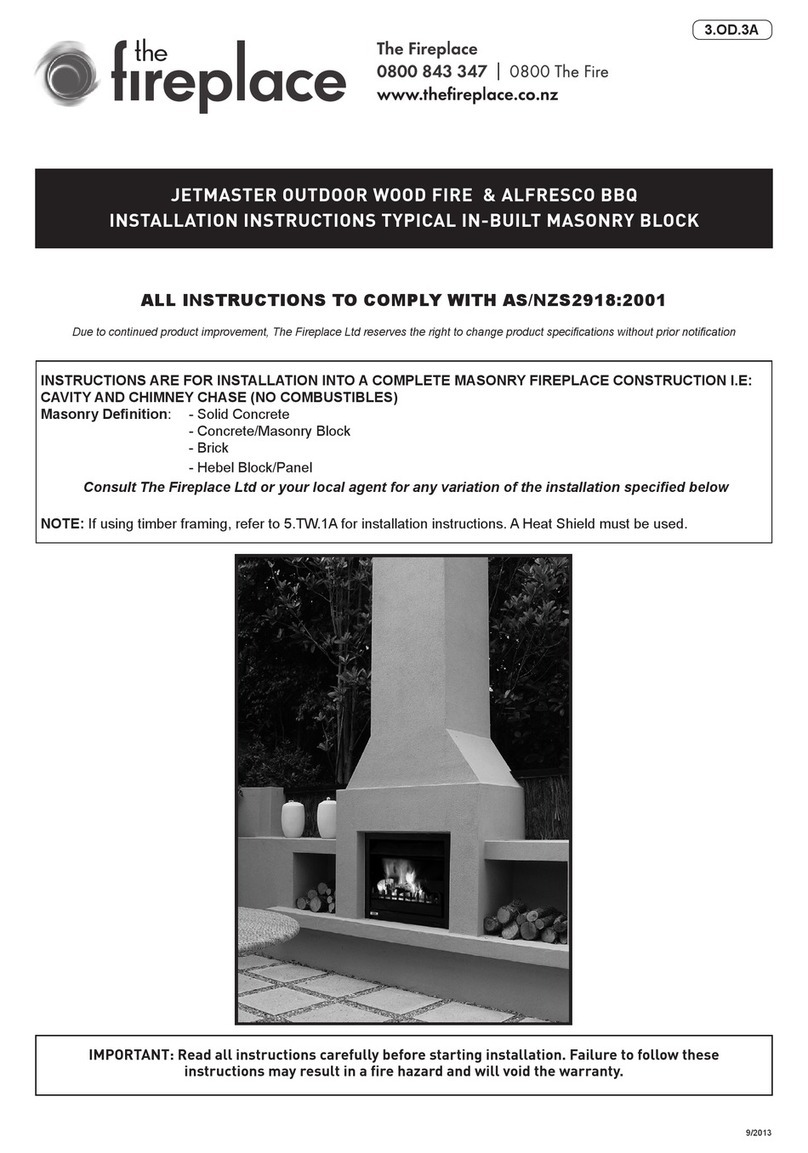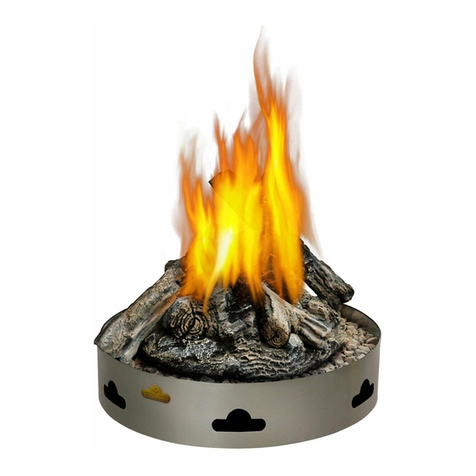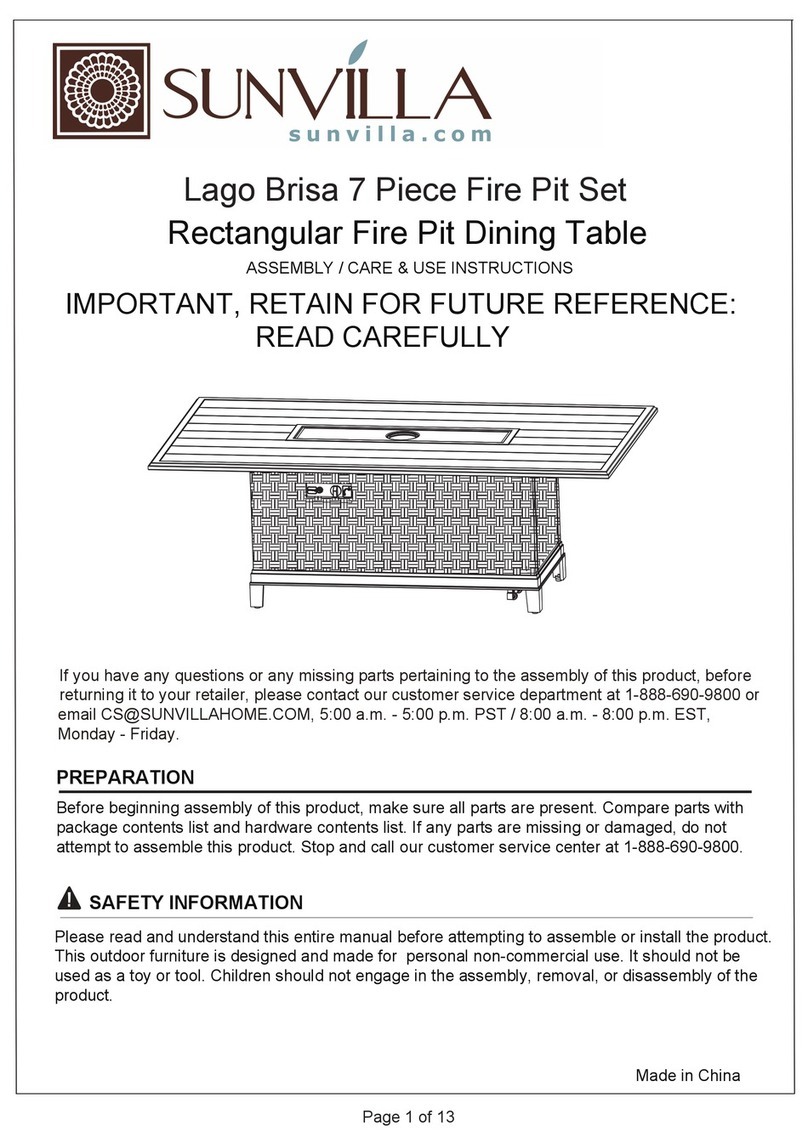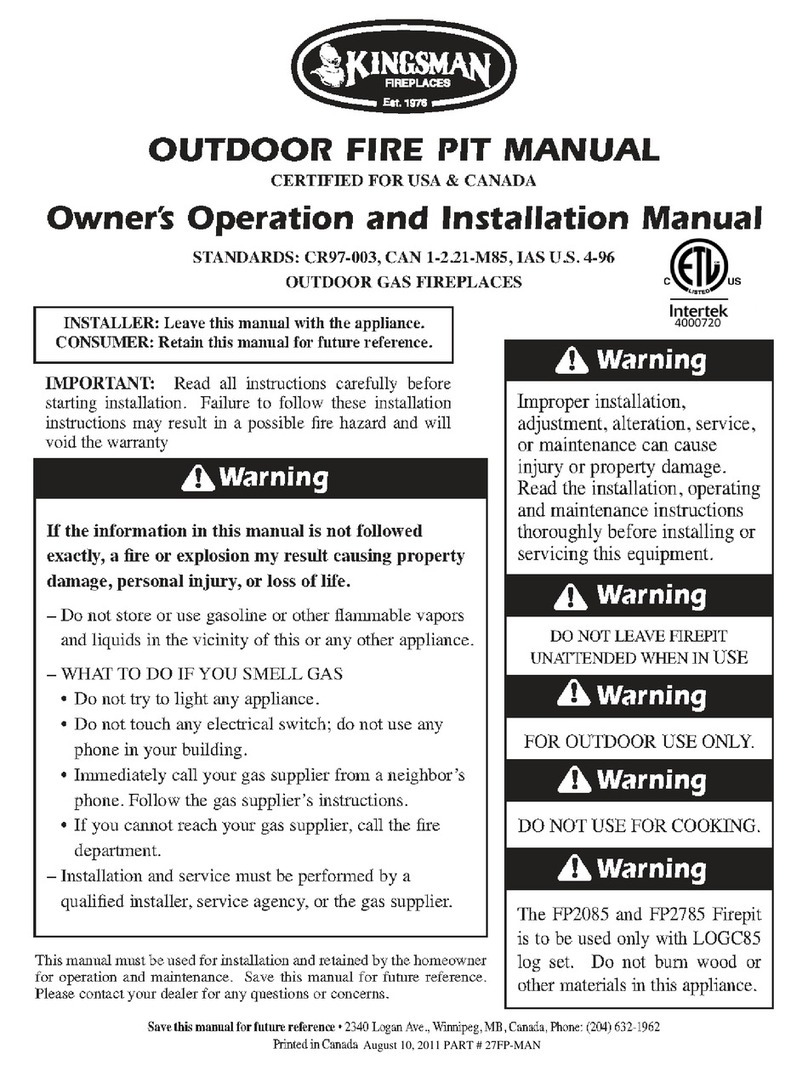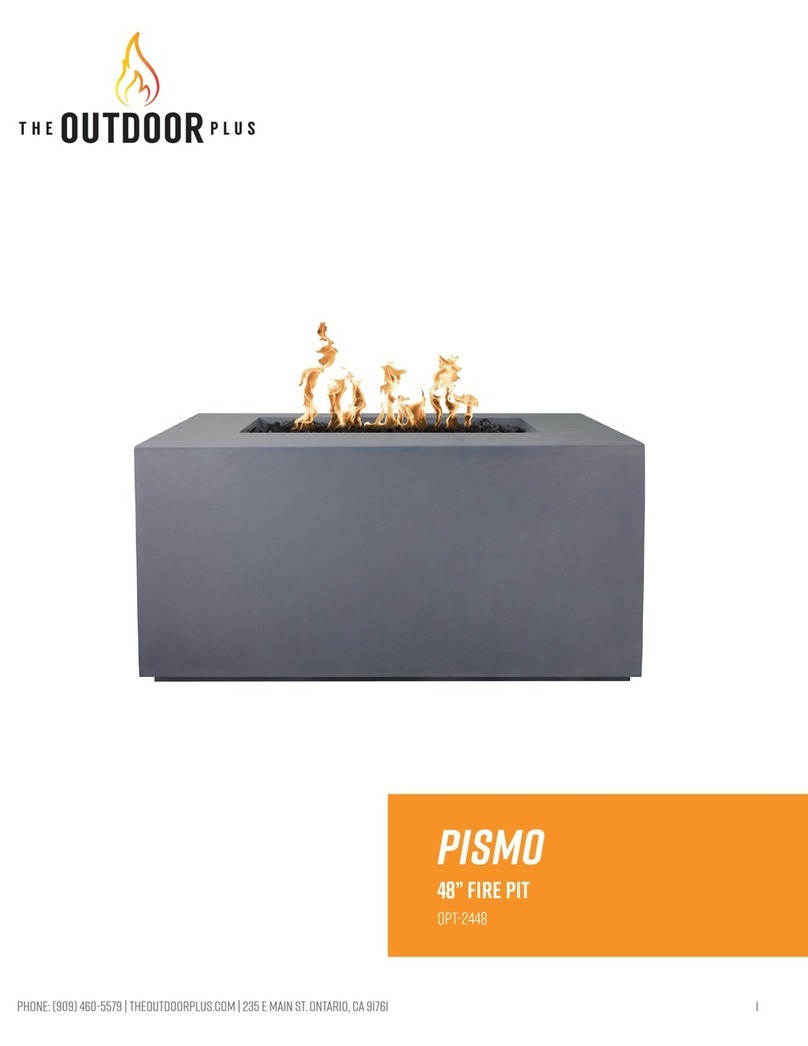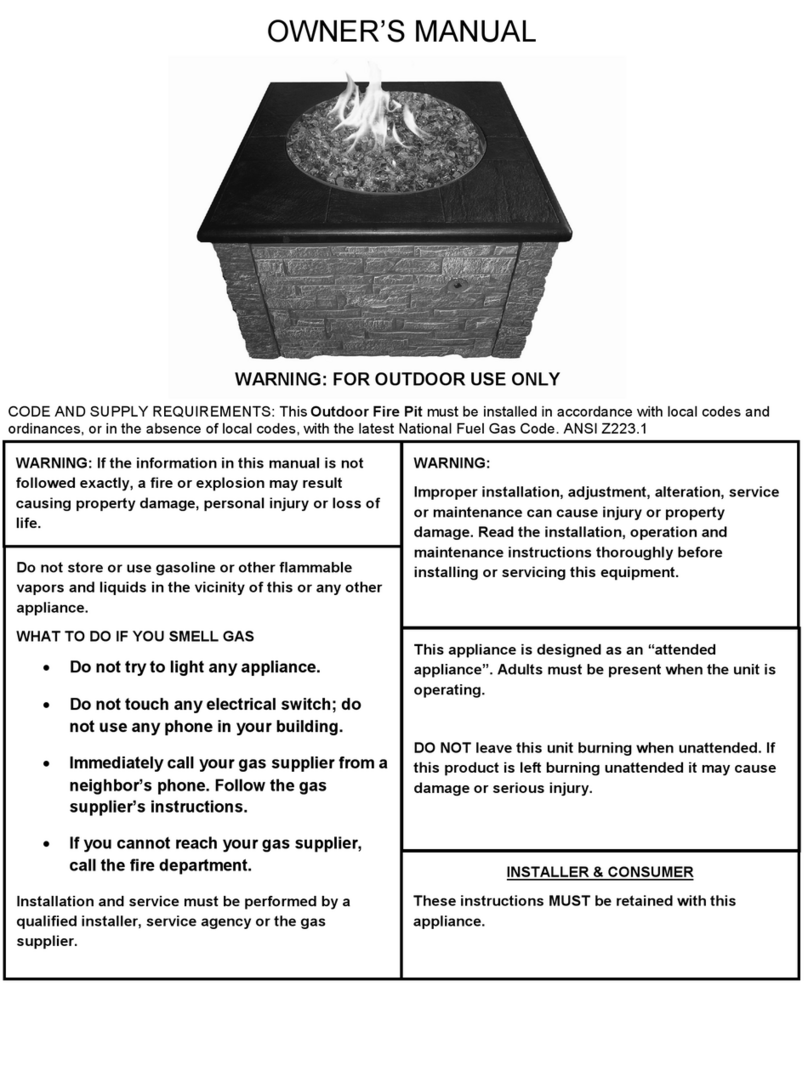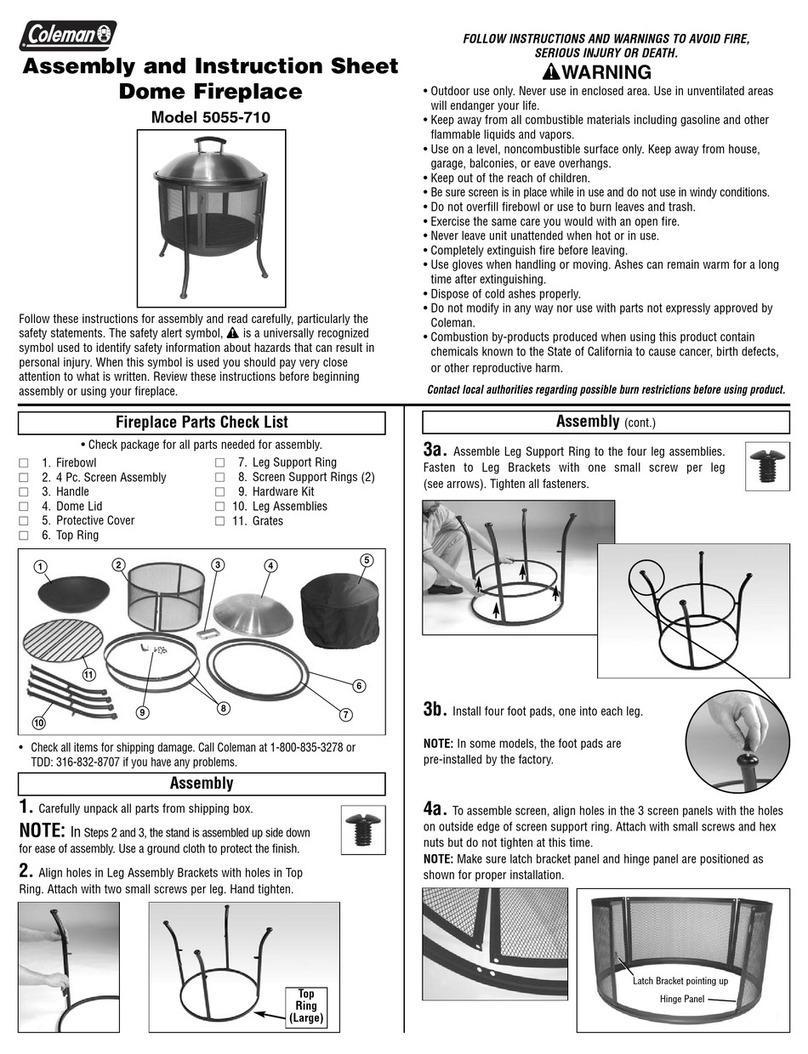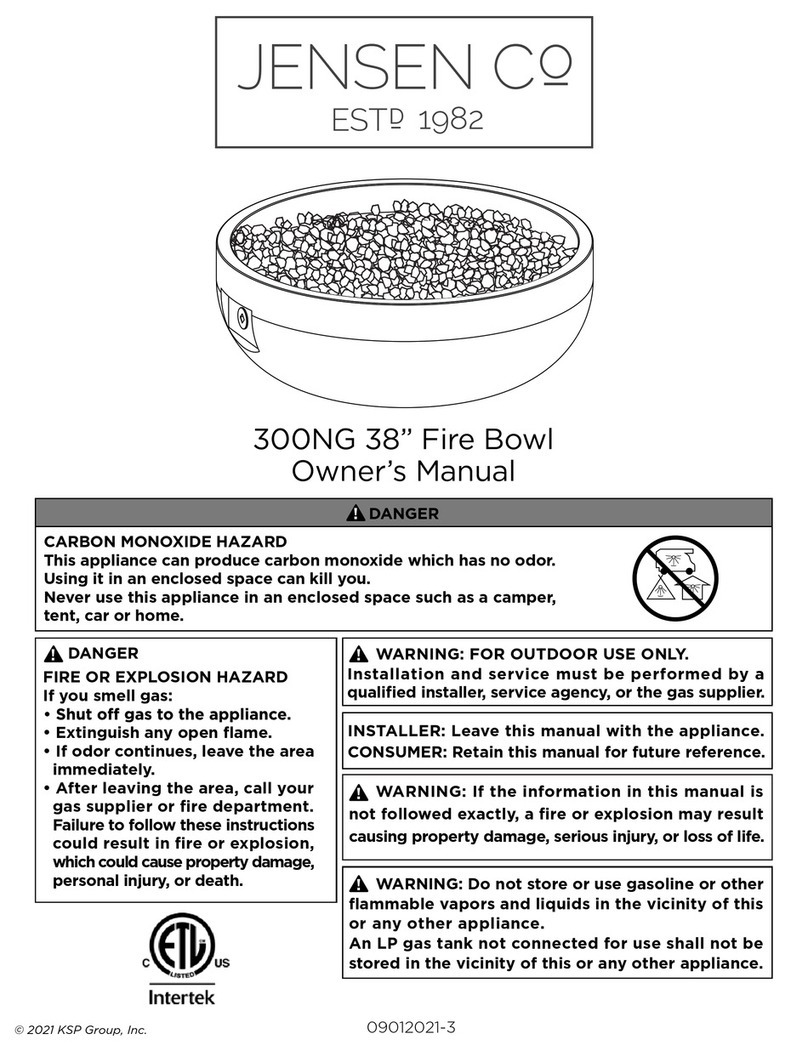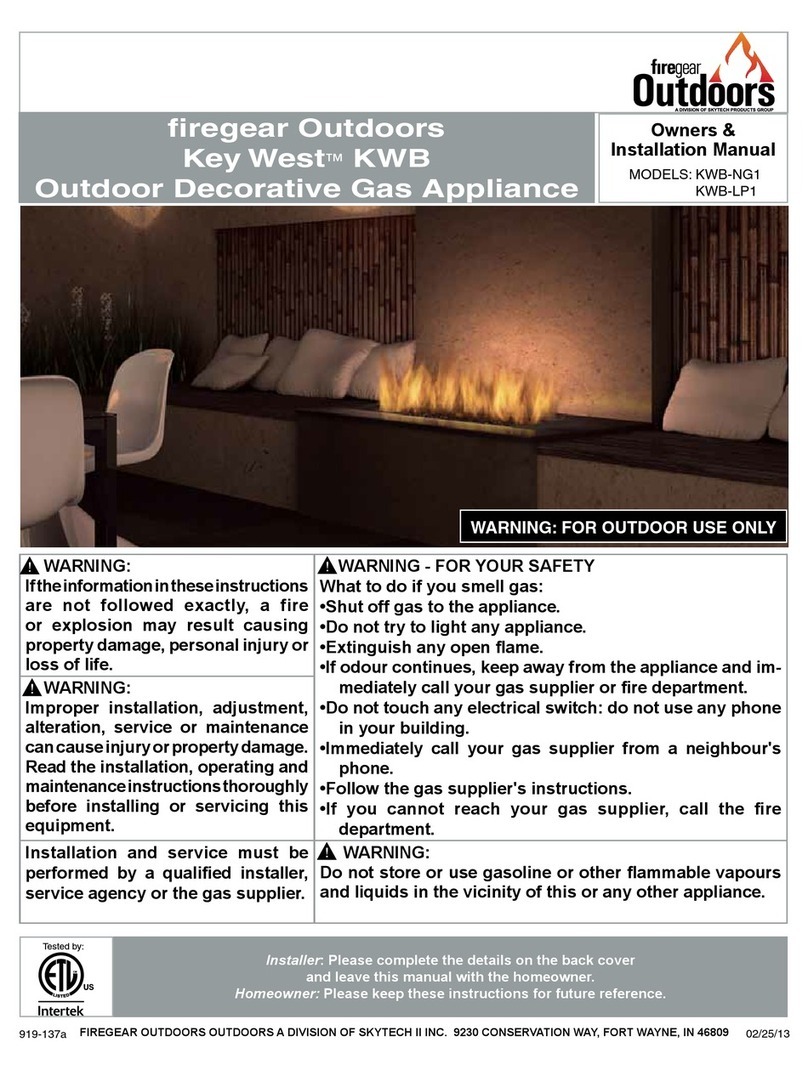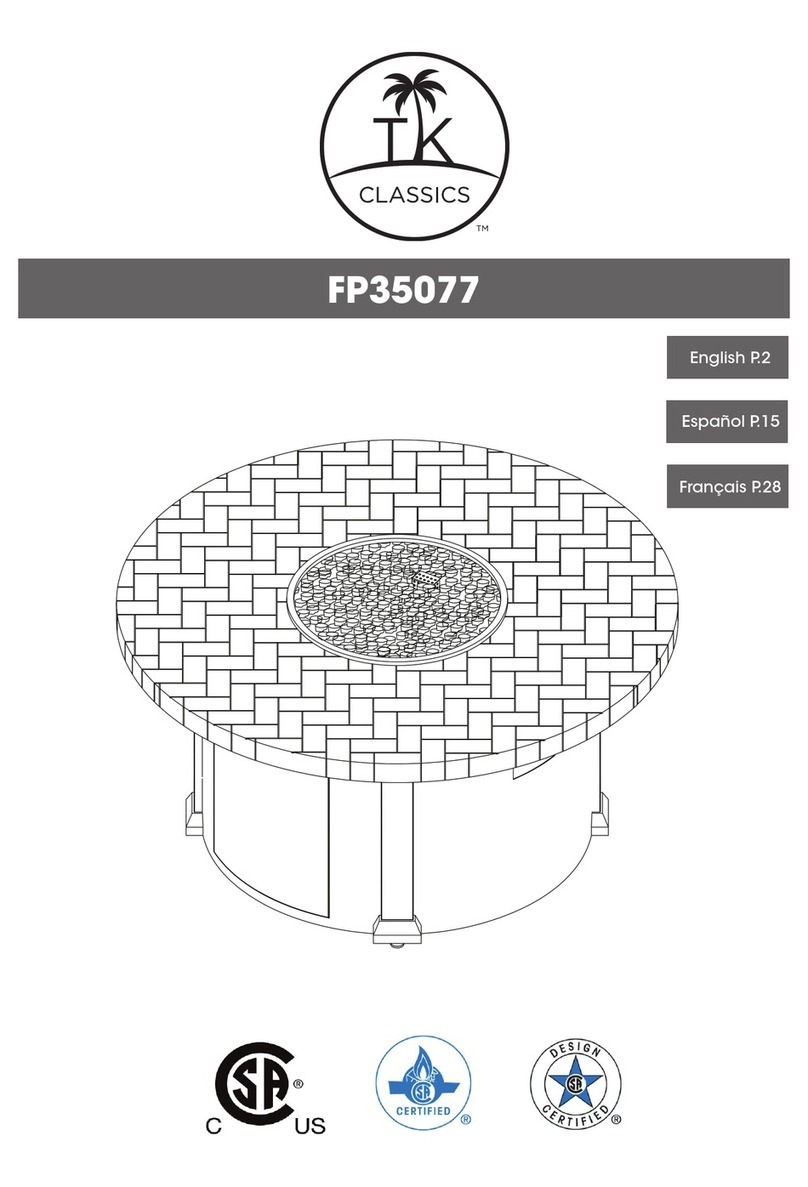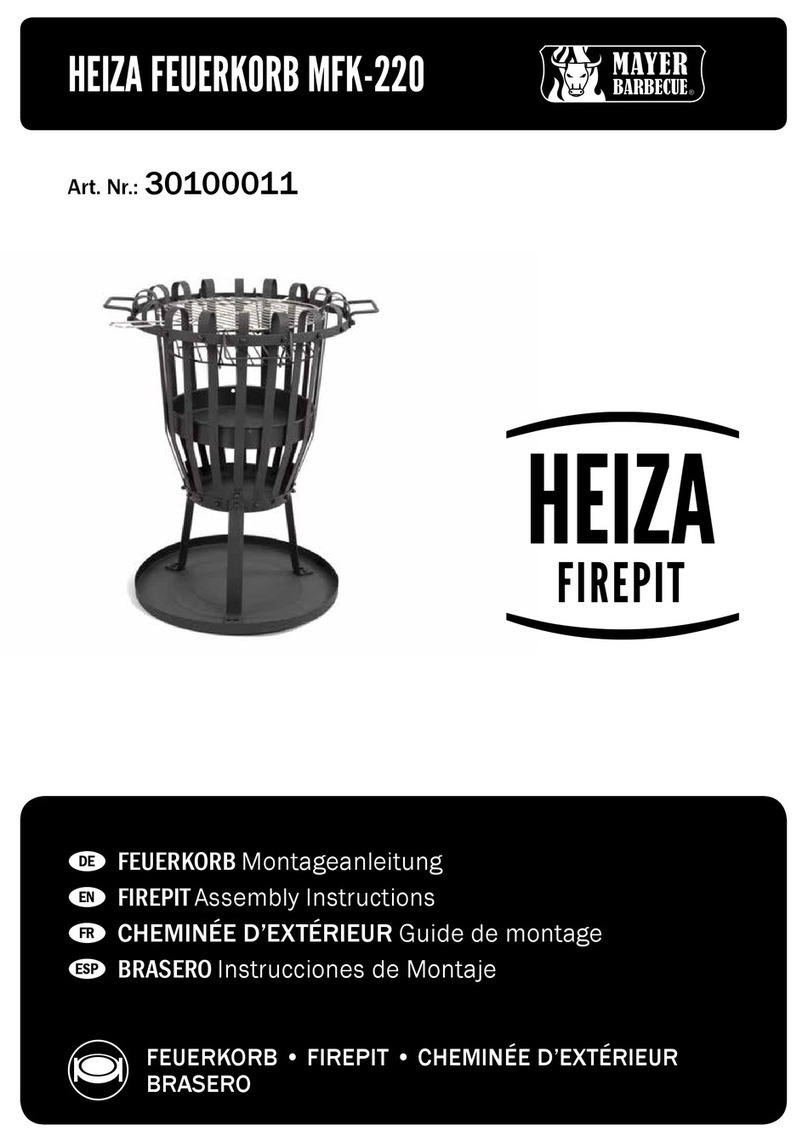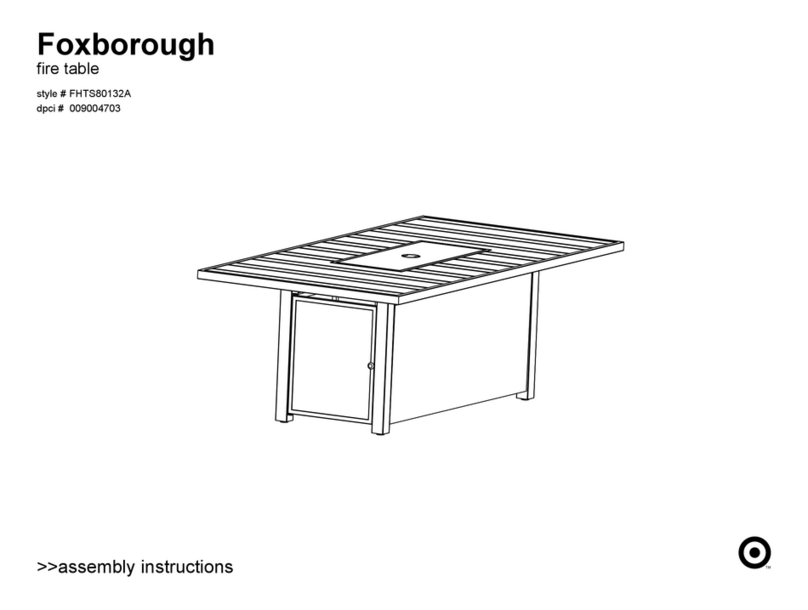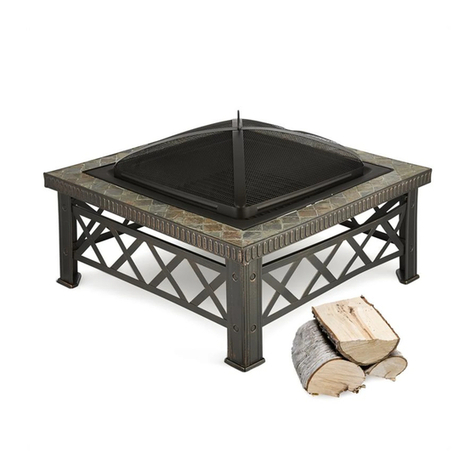
PAGE 1 OF 16
Installation and repair should be done by a qualified service person. The appliance should be inspected before use and
at least annually by a qualified service person. More frequent cleaning may be required as necessary. It is imperative
that the control compartment, burners and circulating air passageways of the appliance are kept clean.
*Do not use this fire pit for cooking.
*Do not burn any other materials then are supplied with and intended for use in this fire pit.
*Do not pour water into the fire pit.
*The installation of this product must conform with local codes. In the absence of local codes, use the National Fuel
Gas Code, ANSI Z 223.1/NFPA54. Reference to Natural Gas and Propane Installation code CSA b149.1 or Propane
Storage and Handling code B149.2.
*Do not use this fire pit if any part has been under water.
*Do not store a spare or disconnected liquid propane cylinder under or near this fire pit.
*After a period of storage, and/or non use, the propane fire pit should be checked for gas leaks and burner obstructions before use.
*Do not operate the propane fire pit if there is gas leak present.
*Never use a flame to check for gas leaks.
*Combustible materials should never be within 61” (155 cm) of the top 48” (122 cm) from back or sides of your propane fire pit.
*Do not put any other fire pit cover or anything flammable on, or beneath the fire pit.
*The propane fire pit should never be used by children. Children must be supervised when they are anywhere near the appliance.
*Users should be alerted to the hazards of high surface temperatures and keep a safe distance to avoid burning or clothing ignition.
*Pay attention when operating the fire pit. It is hot in use and should never be left unattended. Do not transit fire pit
while in operation.
*Should the fire go out while burning, turn the gas valve off. Follow the instruction and wait five minutes before attempting to relight.
*Never use charcoal or any other solid fuel in the fire pit. Never parch clothing or other flammable materials on or near the fire pit.
*Never lean over the open fire pit or place hands or fingers on the upper portion of an operational unit.
*Keep ventilation openings in cylinder enclosure ( FIRE PIT BODY ) free and clear of debris.
Always remove protective cover or lid before operating.
*Please take out the battery when not using the fire pit for an extended length of time.
*Do not enlarge valve orifices or burner ports when cleaning the valve or burner. Cylinder supply system must be arranged for
vapor withdrawal.
*LP Tank used must include a collar to protect the cylinder valve. *Never fill the cylinder beyond 80% full.
*The conversion or attempted use of natural gas in a liquid propane unit or liquid propane gas in a natural gas unit is dangerous.
*Do not use this fire pit on vehicles or boats. Always operate the appliance on the flat ground outdoors.
*Keep any electrical supply cord and the fuel supply hose away from any heated surfaces.
*Do not use this fire pit unless all parts are in place.
*Keep the appliance area clear and free from combustible materials, gasoline, and other flammable vapors and li quids.
*Prior to each fire table operation, check the hose for evidence of excessive abrasion or wear by looking through the visual
check hole. If the hose is damaged, cracked or cut, it must be replaced before using the gas fire table. The hose assembly
can only be replaced with a hose assembly specified by the manufacturer. Please call 1-888-690-9800.
*Locate the hose out of pathways where people may trip over it or in areas where the hose may be subject to accidental damage.
Before each use, remove the lava rock or glass beads. Examine the burner and its components. If dirty, clean with a soft brush
and soapy water solution. Also examine the area around the burner. Any dirt or foreign material, such as spider webs or nests in
this area should be removed. If it is evident that the burner is damaged,the fire table must not be used. The burner assembly
can not be replaced. Please call 1-888-690-9800.
*For LP-gas, only a 20 lb supply cylinder is be used and must be:
1) constructed and marked in accordance with the U.S. Department of Transportation (D.O.T.)
Specifications for LP-Gas Cylinders, or the Standard for Cylinders, Spheres and Tubes for Transportation of Dangerous Goods
and Commission, CAN/CSA-B339, as applicable;
2) provided with a listed overfilling prevention device;
3) provided with a cylinder connection device compatible with the connection to the appliance.
